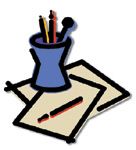Viewpoint: Seven steps every R.Ph. should know
When my career as a pharmacist began, I thought checking prescriptions was one of the most important tasks that pharmacists performed. Was I ever wrong! It is the most important task that we perform.

An error can potentially have catastrophic outcomes. Grossly misfilling just one out of 200 Rxs (0.5% error) during a shift could cause you to lose your license or-even worse-a patient to lose his or her life! Any dispensing error that gets past the pharmacist and into the hands of a patient could cause significant harm to the customer. High-volume community pharmacists must deal with this immense pressure every day.

I continued with only this method for a few years with success, but still, occasionally, I'd miss something. It was not until I thought about the sequence of comparing the script to the vial that I really turned the corner-this was my first big breakthrough. I discovered you must look at the script, then interpret it, then think about what you would type into the computer, and then, and only then, look at the labeled vial. This system brought my dispensing errors to a fraction of where they were (to where they should be).
This sequence concept later carried over into another area as well. The very first step in checking any prescription is choosing which one to check. I always look at the label on the script first, and then find the corresponding vial by looking at the drug name printed on the vial, and not by looking at the contents of the vial (that's the second step).
I've had one more revelation when it comes to checking prescriptions, and that is the concept of "minute" details and the patient's perception of you. Minute details are those errors that would not harm the patient; however, the prescription is still not 100% correct (e.g., calling a pill a "tablet" instead of a "capsule," or grammatical errors). If the label (the only part of the Rx-filling process that a patient sees) looks good, reads well, and satisfies all patient requests, then the pharmacist looks good in the eyes of the patient, which, in turn, builds a trusting relationship-that is the power of the patient's perception of the pharmacist.
Being very meticulous by nature, I had made notes of everything that I did and learned. A seven-step procedure was created where I put down in writing everything that I think about and do while checking a prescription in order to train my interns, and, from that source, I published a book to pass along to new pharmacists. How to Check Prescriptions with Accuracy and Ease in Less Than 1 Week is the product of my experience.



